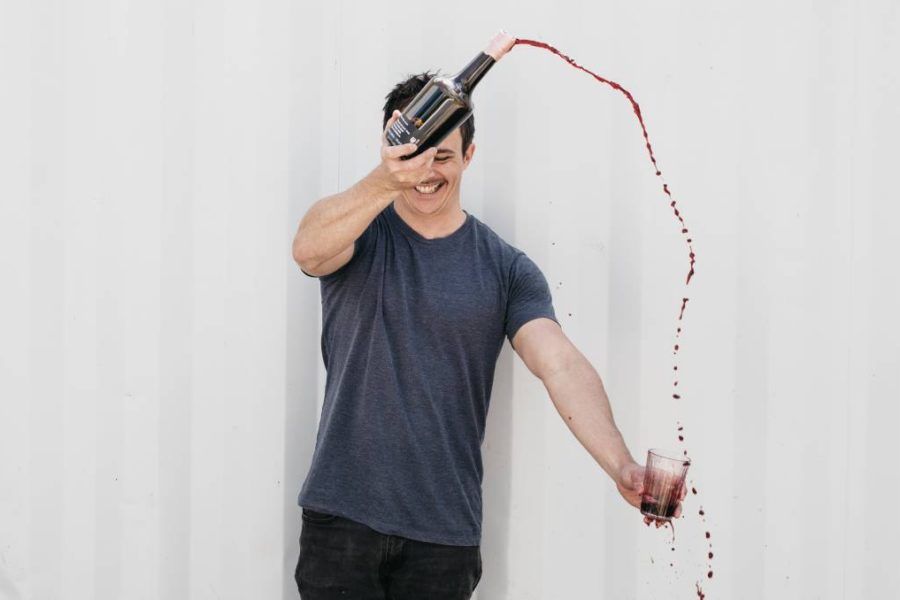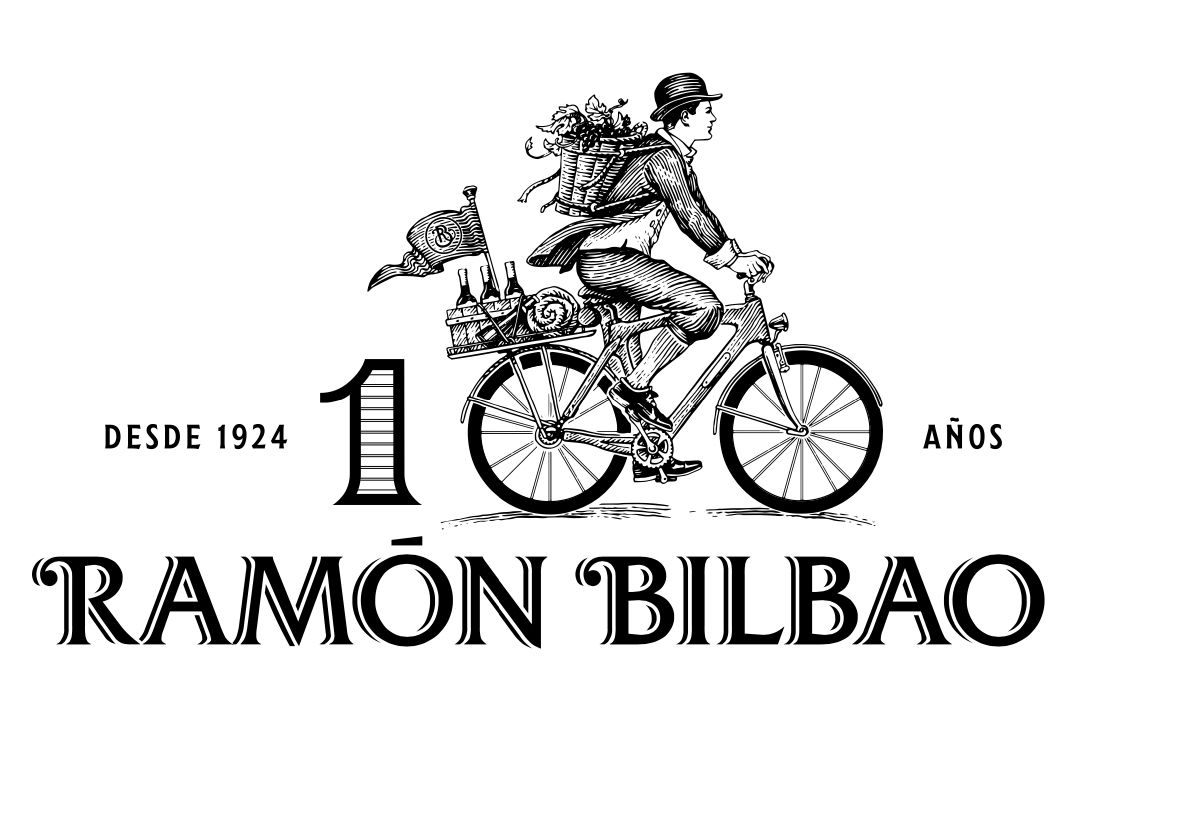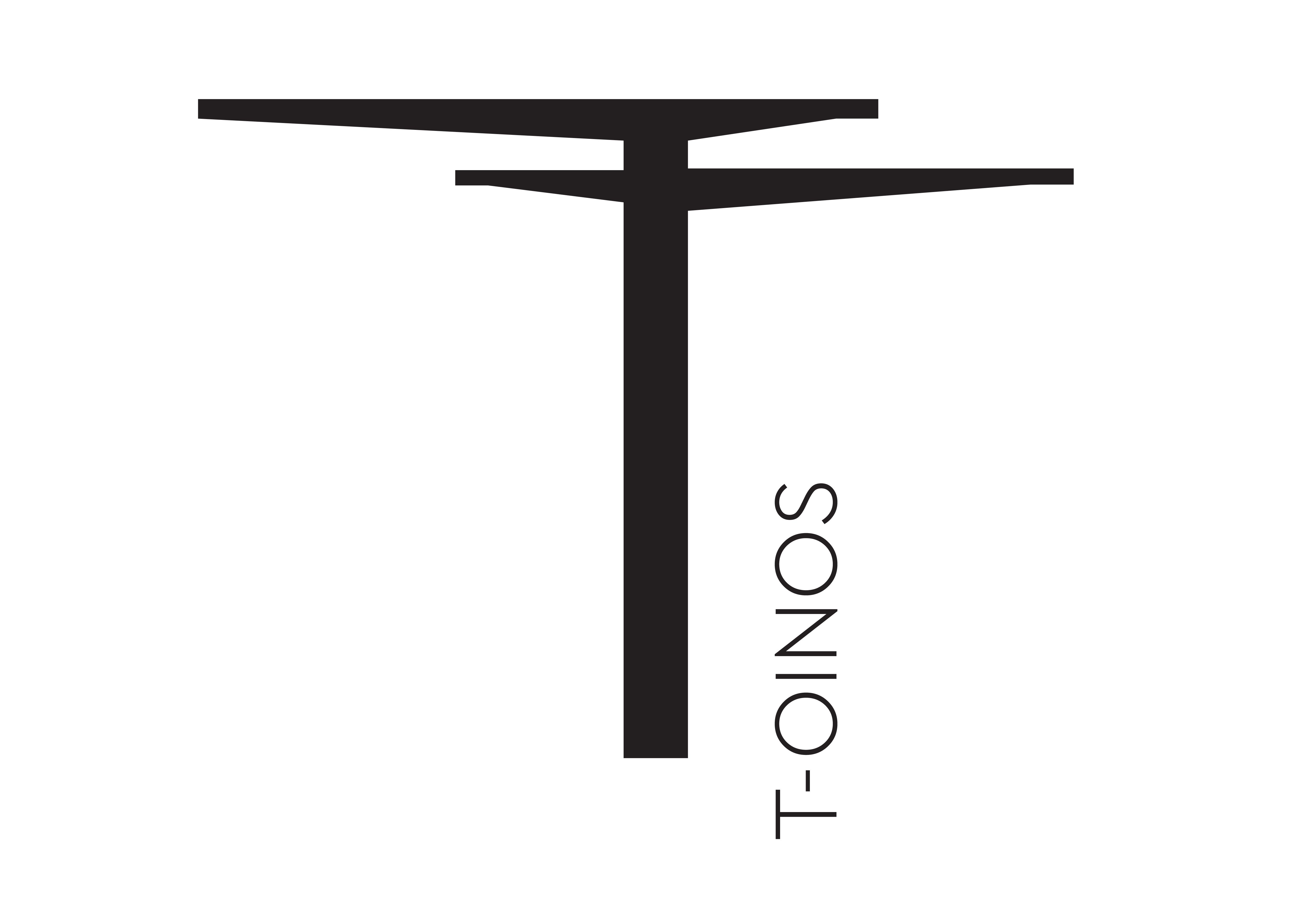“The hard part was summoning the courage just to have a crack at the first vintage,” is how Richard Burch describes the brave steps the next generation of winemakers and producers are willing to make in Margaret River, writes Julian Tompkin.
It was the early-2010s and winemaker Nic Peterkin got a tip off about a neglected block of Chenin Blanc at the northern reaches of Western Australia’s Margaret River wine region. The vines had been abandoned, left to grow untamed amongst the foraging pigs, geese and wildflowers.
Peterkin had returned, newly inspired following stints at wineries throughout Portugal, Mexico and the United States. But Margaret River, like much of the world, was in the middle of a wine glut and battening down to preserve and protect its crown jewels: Cabernet Sauvignon and Chardonnay. Alternative varietals were torn up or abandoned en masse: premium fruit left to putrefy on the vine.
Most would have taken one look at the bedraggled vines and made for the highway, but Peterkin ventured in, beguiled by possibility. “What I saw wasn’t a derelict vineyard, what I saw was the chance to create something different: something delicious,” he recalls.
‘Different and delicious’ have since become the unofficial mantra of his wine label LAS Vino, or ‘Luck, Art, Science’, founded a little over a decade ago.
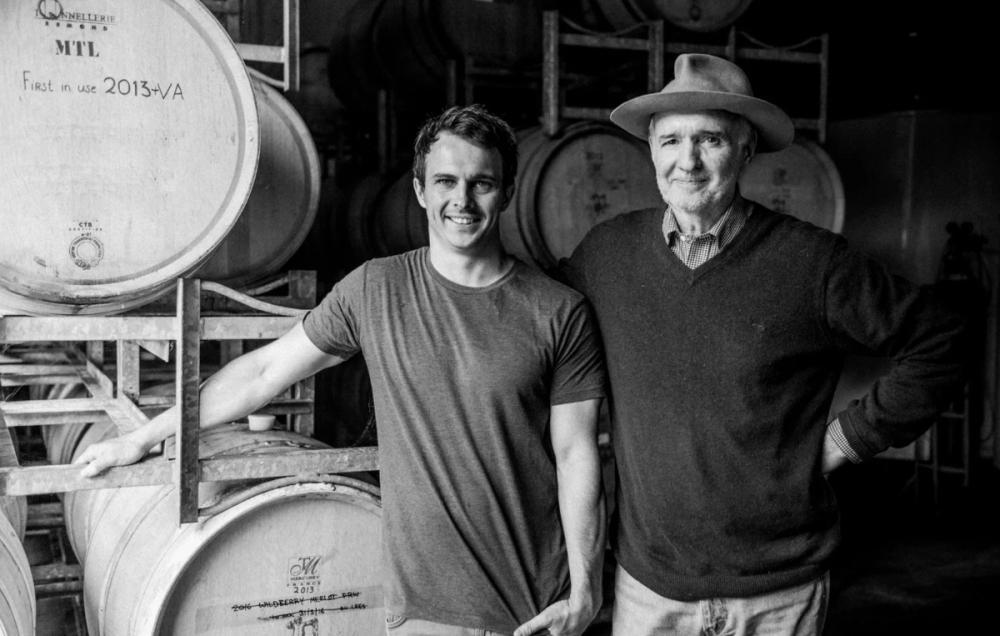
Taking his family’s winemaking roots in a different direction: Nic Peterkin with his winemaking father, Michael, founder of Pierro Wines
To lob a Chenin into traditional Chardonnay territory was always going to be a provocative move, but LAS Vino was conceived with dissidence at the very crucible of its DNA. This fact is made all the more radical in that Peterkin is born of regal Margaret River lineage: his grandparents (Kevin and Diana Cullen) the founders of Cullen Wines (now headed by his formidable aunt Vanya), and his father (Michael Peterkin) the founder of Pierro, who – in concert with Leeuwin Estate – would define the very essence of premium Margaret River Chardonnay.
“That life was there for me, and still is,” Peterkin says of the family business, driving amidst the towering Marri trees endemic to the region. “But if you simply do what your father did before you you’re living his story. I wanted to create my own story and learn from my own mistakes. As in life, you only learn the lesson when you do it yourself.”
Breaking free
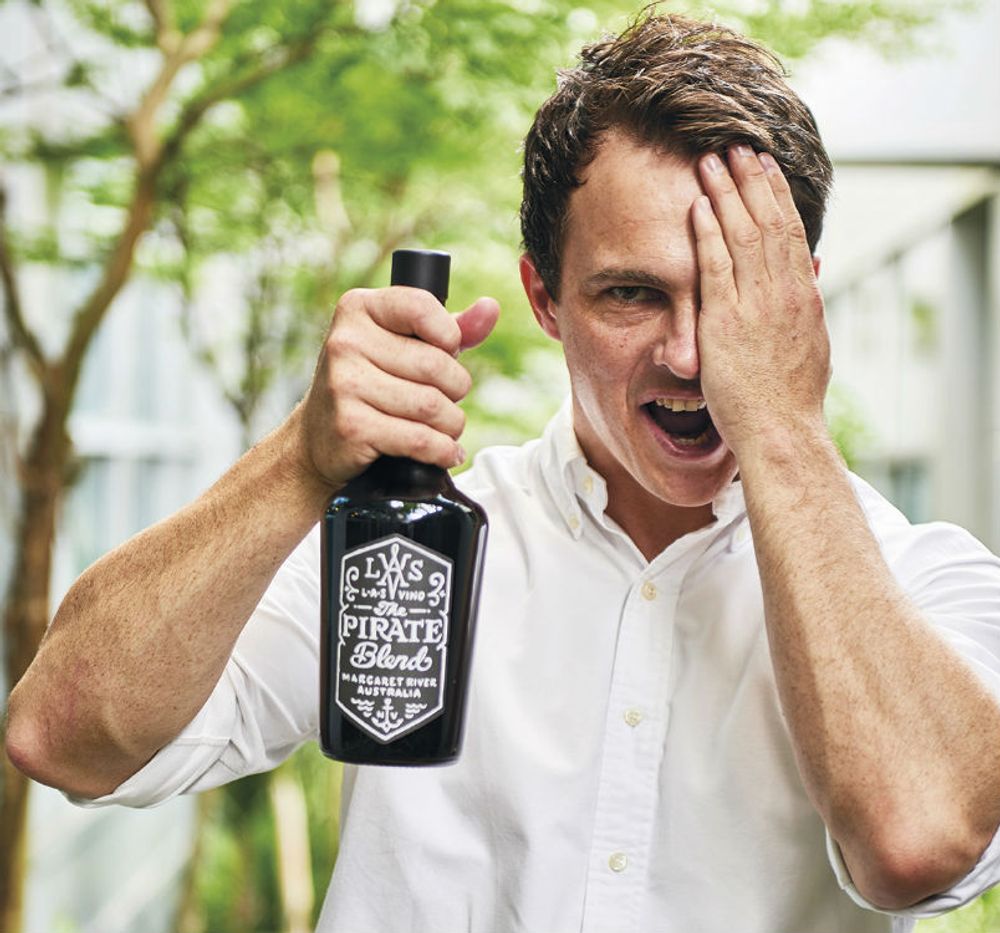
Nic Peterkin with his Pirate Blend that brings together a blend of Portuguese varietals including Touriga Nacional and Tinta Cao
The organic Chenin and the cheekily monikered Pirate Blend (a cuvée from rare local plantings of the Portuguese varietals Touriga Nacional, Tinta Cao and Souzao) were clear battle cries as to Peterkin’s intent: to break free from the shackles of dynastic expectation and fashion his own bold name in wine. His early experiments with natural fermentation, minimal additions and an aversion to filtration all too quickly had some categorising the young winemaker as a leading protagonist of the then nascent Australian natural wine movement. It quickly became apparent, however, that he was anything but.
“I don’t ever want to be dogmatic with my winemaking and follow an ethos that is so strict to the point that you’re losing what brought you to it in the first place, which is site quality,” insists Peterkin. “Science is a vital part of that…it’s there in the name, Luck, Art, Science. It all began very experimental, but I soon discovered what makes an inferior wine and what makes a unique wine. I now have that knowledge and that confidence by learning from my mistakes.”
Whilst there is a distinct hue of anti-establishment and irreverence in Peterkin and the way he frames his products – most notoriously manifested in a special 2019 release Chardonnay called F**k Him, squarely aimed at then-US President Donald Trump – the wines are otherwise deadly serious.
The Demeter (biodynamically) certified Chenin is handpicked in multiple stages and pressed in whole bunches that are demarcated between barrique and amphora. The resulting wine has ignited a resurgence of intrigue in the potential of this aromatic varietal in this region: an alternative to Sauvignon Blanc, which Peterkin further enhances with lees stirring to produce layers of heady passionfruit aromatics.
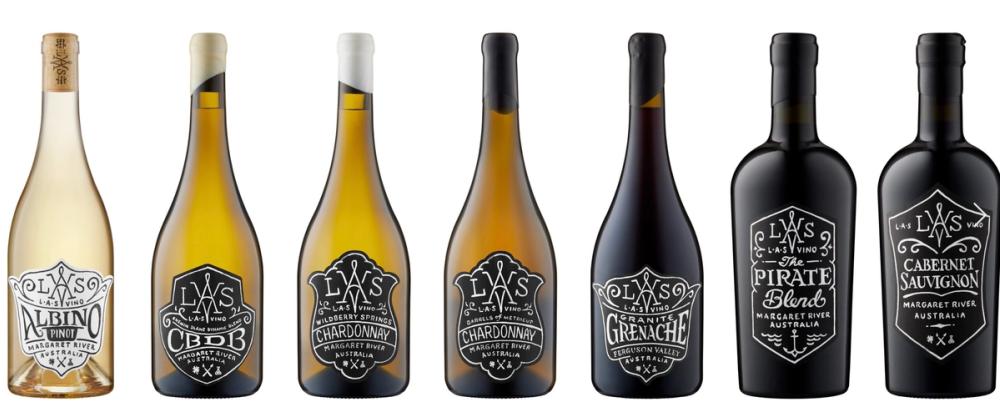
The Las Vino range
Certifying this revival, Western Australia is now home to the annual Australian Chenin Blanc Challenge, celebrating the dexterity of this unique varietal.
The irreverently named Albino Pinot has rightfully become a summer favourite both in Australia and internationally: a toothsome blend of Margaret River Pinot Noir and Chardonnay that is resplendently salmon in colour and brandishing a scrumptious palette Peterkin likens to ‘strawberries and cream’.
Although he would venture beyond Margaret River to the Ferguson Valley to source the bush vine grown fruit for his elegant Grenache, Peterkin could not avoid the urge to front up to his birthright and give the two totemic Margaret River varietals, Chardonnay and Cabernet Sauvignon, a LAS Vino shakeup. Both are extremely limited runs employing handpicked fruit, natural ferments and protracted maturation periods to create idiosyncratic wines that are reinterpreting the very essence of Margaret River.
“The big question I always ask when looking for fruit is ‘is there a need for this wine?’,” Peterkin opines. “How is this different to what’s already in market? Wine is one of the most competitive fields in the world, so why would anyone drink my Chardonnay over another, particularly a Margaret River Chardonnay? What makes it different…what makes it unique?”
Doing your own thing
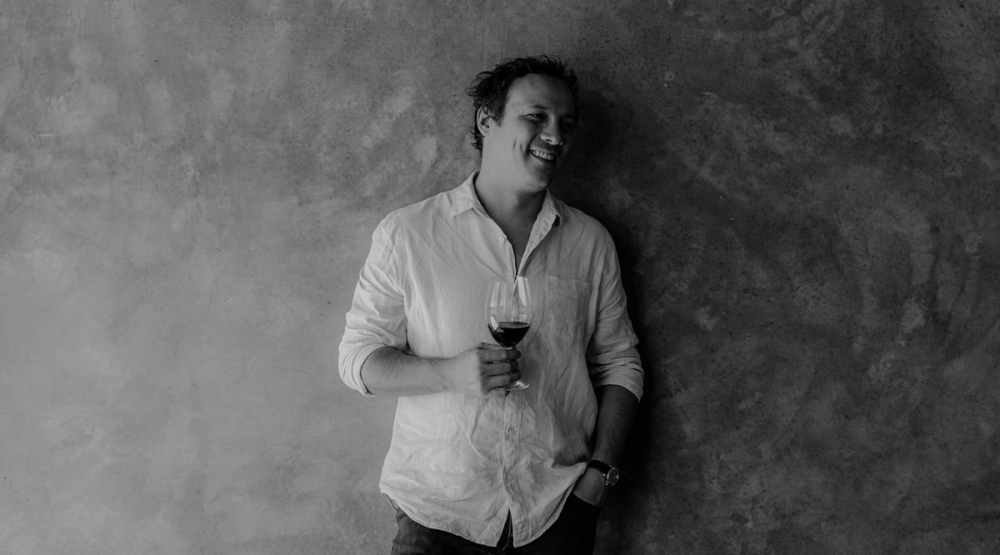
Richard Burch works both with his family business – Burch Family Wines – and his own start up Mont Tout focused on making natural wines
This empirical concern with singularity is one shared by Richard Burch of Burch Family Wines, a member of one of the world’s most exclusive wine fraternities in Australia’s First Families of Wine. As the export manager for Burch’s Margaret River, Great Southern and Burgundian labels Howard Park, Marchand & Burch and Madfish, Burch has overseen the diversification and growth of the company’s export markets, including freshly inking an agreement to export significant quantities of Madfish Margaret River Chardonnay into the notoriously guarded Swedish market.
On his extensive travels over the years, Burch often found himself at trade fairs, or in wine bars enjoying drops that were the very antithesis of the traditional wines meticulously crafted by his father, the formidable company patriarch Jeff Burch. It was a transformative visit to Sydney’s notorious Rootstock carnival of natural and minimal interventionist wine – replete with its motley assortment of radicals, organic soothsayers and dapifers of non-conformist juice – that would prompt Burch to galvanise the moxie to create his very own label dedicated to winegrowing impudence. That label would be ordained in 2012 as Mon Tout: French for ‘my everything’.
Being brave
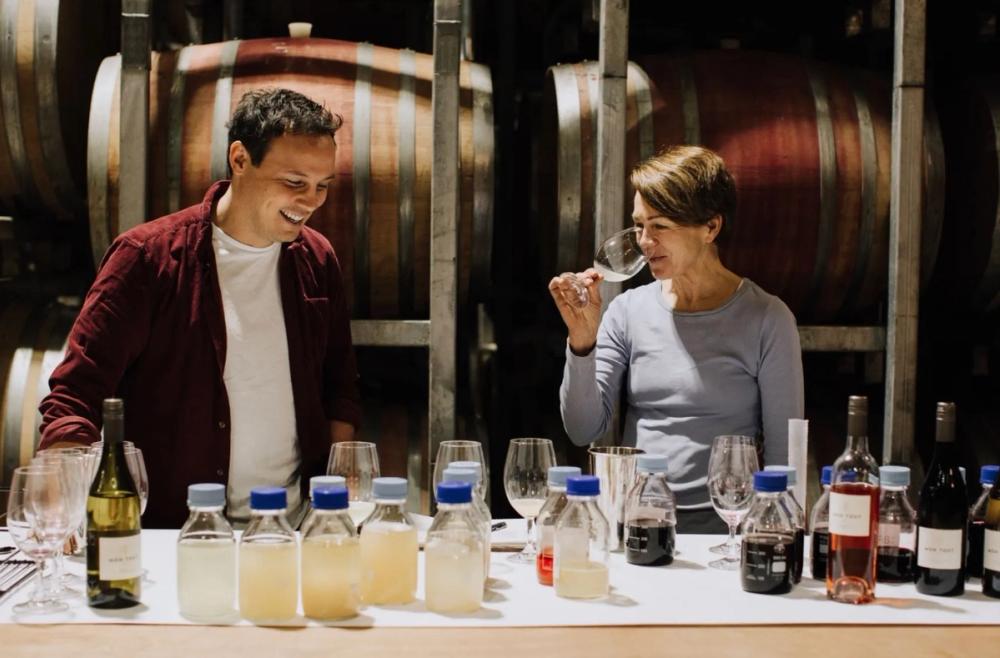
Richard Burch with Mont Tout’s winemaker Janice McDonald
“The hard part was summoning the courage just to have a crack at the first vintage,” Burch confesses, going on to recall the spectre of his father watching on equally perplexed as bemused as his son spurned decades of hard-grafted knowledge and set fire to the playbook. Gone were the time-tested contemporary methods of industrial farming and harvesting, controlled yeast inoculation, sulphuric stabilisation and filtration. “It’s lo-fi wine production: take your hands off and let the fruit tell the story,” says Burch.
“He had a field day,” he laughs self-consciously of his father’s initial reaction to Mon Tout. “I won’t repeat what he said as it’s not printable…but he was having a laugh and constantly teasing me, and still is to a degree to this day. But now he’s seen a couple of vintages that have actually come through with the goods he’s like, ‘yeah…okay’ – which is about as good as you’ll get from him. And I’ll take it.”
At the kernel of Mon Tout is the concept of pleasure over protocol: creating wines imagined in the glass rather than in the cellar. Unlike many small producers traversing the minimal intervention route, Burch has unfettered access to premium fruit from all West Australian wine regions, and herein was born the essence of the label: to not only blend varietals but blend regions. And in a dynasty existentially defined by provenance and purity, it was a truly heretical move.
“Look, the provenance, single varietal, single region market is well and truly serviced,” adds Burch. “Mon Tout is about bringing things together, both regions and people.”
Most emblematic of this audacious move is Kind Animals, fusing Grenache from old Swan Valley bush vines, Syrah from the Blackwood Valley and Pinot Noir from Mount Barker in the Great Southern to create a truly supple, ripe and elegant wine that demands to be chilled slightly before enjoying with the people you like best.

The eclectic Mont Tout range of wines
Completing the Mon Tout range is the Strange Love Rosé (a toothsome olio of Swan Valley and Margaret River Grenache and Great Southern Pinot Noir), Long Play (an aromatic blend of Great Southern Pinot Gris, Gewürztraminer and Riesling fermented in ceramic eggs) and Heydays (an enchanting collision of Chardonnay from both the Great Southern and Margaret River).
Next generation
LAS Vino’s Nic Peterkin pulls over nearby where, as a volunteer firefighter, he recently helped wrestle a massive bushfire that threatened to tear through the region. “Wine’s not just about one generation,” he offers philosophically, looking out upon the cindered vista. “My dad’s generation may have made Margaret River an internationally-recognised wine region, but things are always evolving. I want to make wine for a new generation. My generation.
“I have made a conscious decision to not produce high volumes of wine,” he resolves in an ultimate statement of intent. “The way it is now I can do everything by hand, my fingerprints are on everything: the fruit, the wine, the bottle. Every wine is truly unique. You only get 40 or 50 chances to make wine in your life. One vintage a year, that’s it.You need to make those chances count. Don’t waste them.”
- This story has been developed as part of the ‘New Voices’ wine content development program run by WA Wines to the World.
- Julian Tompkin is an Australian wine and travel writer. You can follow him on Instagram at @juliantompkin.
